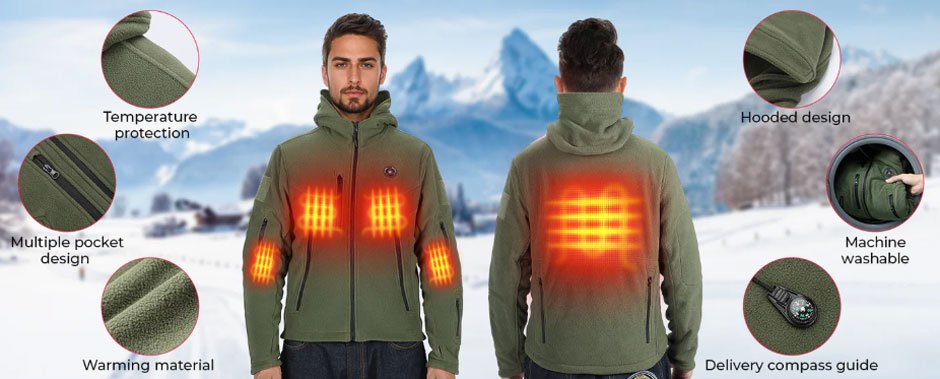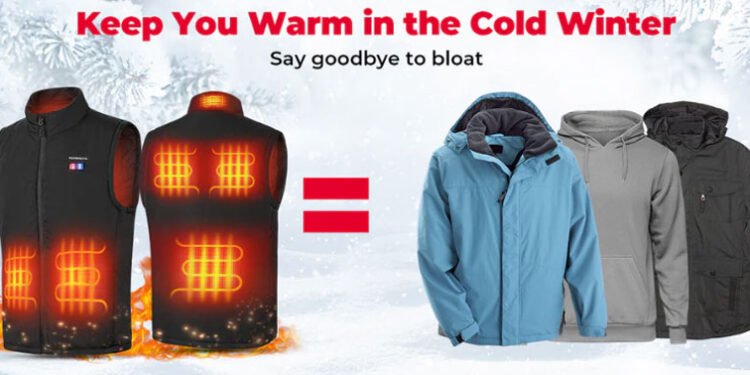Motorcycling isn’t just a summer activity. For many riders, it’s a year-round lifestyle—one that doesn’t stop when temperatures drop. But staying safe and comfortable during colder months requires more than just layering up. That’s where heated motorcycle gear comes into play. With the right setup, winter riding becomes not only bearable but enjoyable.
Heated gear has become an essential part of many riders’ kits. It extends the riding season, improves comfort, and—perhaps most importantly—reduces cold-related fatigue and distractions that can compromise safety. Whether you’re commuting, touring, or just hitting the open road on a chilly weekend, understanding the value and versatility of heated gear is key to making the most of your ride. And with innovative companies like Kemimoto supporting this evolution in rider apparel, options are more advanced and accessible than ever.
The Real Challenges of Cold-Weather Riding
Riding in cold weather is more than just uncomfortable—it can be dangerous if you’re not properly prepared. Unlike in a car, motorcyclists are exposed to the full brunt of wind, rain, and freezing temperatures. Without adequate protection, the body loses heat quickly, and that can affect both physical and mental performance.
Here’s what cold weather does to a rider:
- Reduces reaction time: Cold muscles and stiff joints respond more slowly, which can delay braking and steering input.
- Impacts focus: When you’re focused on how cold your fingers are, you’re not fully focused on the road.
- Causes fatigue: Constant shivering and tension from the cold can wear you down quickly, making long rides exhausting.
- Leads to safety risks: Numb hands can make throttle control difficult, and poor circulation can increase the risk of frostbite during extended exposure.
That’s why heated gear isn’t a luxury—it’s a tool for performance and safety.
What Is Heated Motorcycle Gear?
Heated motorcycle gear uses built-in electric heating elements powered by the motorcycle’s battery or a portable power source. These elements are thin, flexible wires embedded into the gear—usually around areas most susceptible to cold, like the chest, back, arms, fingers, and toes.
Types of heated gear include:
- Heated jackets or vests: These keep your core warm, helping regulate overall body temperature.
- Heated gloves: Crucial for dexterity, heated gloves help maintain grip and brake control in freezing temps.
- Heated pants or liners: These target the legs and hips, ideal for long-distance or highway riding.
- Heated insoles or socks: These protect your feet, which can get dangerously cold even in insulated boots.
Many systems allow riders to control temperature settings via a remote or built-in switch, giving them full control depending on weather and speed.
Benefits Beyond Comfort
While heated gear undeniably makes riding in winter more comfortable, its benefits go deeper:
1. Extended Riding Season
For many riders, heated gear makes it possible to keep commuting or enjoying weekend rides through fall, winter, and early spring. This means fewer months where your bike sits in the garage and more time on the road.
2. Improved Safety
As mentioned earlier, warm gear keeps you focused, alert, and agile. When your hands and core are warm, your body can perform better, and your reaction time stays sharp.
3. Layer Reduction
With effective heated gear, you can wear fewer bulky layers. This means better mobility and less restriction—no more feeling like a stuffed snowman when you mount your bike.
4. Even Heat Distribution
Unlike traditional layering, which can trap heat unevenly and cause sweating, modern heated gear offers balanced warmth that you can control. No more cold spots or overheating.

What to Consider When Choosing Heated Gear
If you’re thinking about investing in heated motorcycle gear, here are some important considerations:
- Power Source: Some gear plugs directly into the bike, while others use rechargeable battery packs. Consider how long you ride and what’s more convenient for your setup.
- Weather Resistance: Waterproof or windproof outer layers add another level of protection. Look for gear that combines insulation with electric heating.
- Compatibility: Make sure all your heated pieces can connect to the same power source or are designed to work together.
- Safety Features: Auto shut-off functions and temperature limiters can help prevent overheating or short circuits.
- Fit and Comfort: Heated gear should fit snugly to allow heat transfer but not so tightly that it restricts movement or blood flow.
Many riders trust brands like Kemimoto because of their focus on rider-focused design—balancing safety, comfort, and technical innovation.
Who Benefits Most from Heated Gear?
While heated gear is useful for all motorcyclists in colder climates, it’s especially valuable for:
- Commuters: Daily riders who can’t avoid bad weather need reliable warmth for safety and comfort.
- Touring Enthusiasts: Long-distance rides mean extended exposure to wind chill. Heated gear can make or break a trip.
- Adventure Riders: Off-road or backcountry riders often encounter sudden temperature drops—gear that adjusts quickly to conditions is essential.
- Cold Climate Riders: In northern regions, heated gear is almost non-negotiable if you want to ride safely outside of summer.
Final Thoughts
Motorcycling is about freedom, but that freedom shouldn’t be limited by the weather. With heated motorcycle gear, you can take back control of your riding season, protect your health, and maintain performance on the coldest days.
As technology continues to evolve and manufacturers like Kemimoto innovate to meet the needs of real riders, heated gear is becoming more efficient, comfortable, and user-friendly. So if you’ve ever cut a ride short because your fingers went numb or stayed home because of frost on the ground, it might be time to heat things—literally. Winter doesn’t have to end your ride. It just needs the right gear. Get more for less with Kemimoto! Enter “kemi12” and score an extra 15% off sitewide—hurry before the offer expires.












